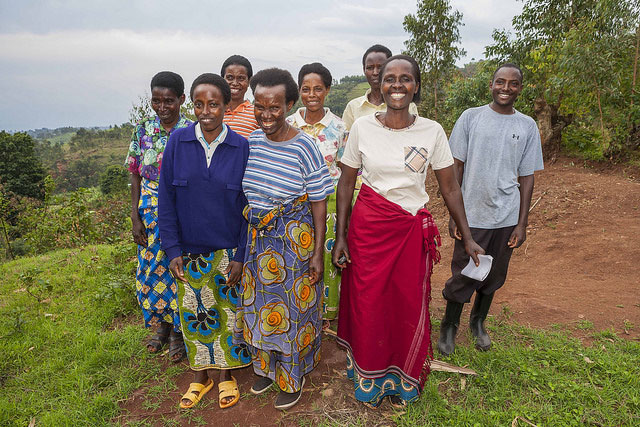Prior to European colonisation, Rwanda was the site of one of the region’s most complex monarchical systems.
Rwanda has three generally recognised ethnic groups: Hutus, Tutsis and Twas. The earliest known inhabitants of the region were the Twa, a Pygmy people. In precolonial Rwanda, a central social and economic distinction was between farming and animal husbandry; the latter had greater status and power. The terms ‘Hutu’ and ‘Tutsi’ appear to have their origins in this distinction; in general, Hutus were farmers of lower social status, while Tutsis were pastoralists of superior social status. Although there was variation between these distinctions, generally Tutsis also controlled the monarchy as precolonial Rwanda was controlled by the Tutsi royal family.
Although the upper echelons of society were largely Tutsi, ethnic divisions were not stark; many Hutu were among the nobility and significant intermingling took place. The majority of the Tutsi, who made up 15-18% of the population, were poor peasants, as were most of the Hutu.
In 1895, Rwanda became a German province. The Germans were, at first, completely dependent on the existing government as the German authority kept the indigenous administration system by applying the same type of indirect rule established by the British Empire in the Ugandan kingdoms. European explorers and missionaries labelled Rwandan Tutsis as a “superior” “race” of “natural born leaders”. Colonial-era documents frequently described Hutus as short, stocky, dark skinned and wide-nosed, as opposed to Tutsis, who were presented as tall, elegant, light-skinned and thin-nosed.
After Germany lost World War I, the protectorate was taken over by Belgium, because of the League of Nations mandate. Belgian rule in the region was far more extreme and harsher than that of the Germans. With the backing of Christian churches, the Belgians used the minority Tutsi upper class to rule over lower classes of Tutsis and Hutus.
Belgian-forced labour policies and stringent taxes were mainly enforced by the Tutsi upper class, whom the Belgians used as buffers against people’s anger, thus further polarising the Hutu and the Tutsi. Many young peasants, to escape tax harassment and hunger, migrated to neighbouring countries. They moved mainly to Congo but also to Ugandan plantations, looking for work.
In the 1930s, Belgian colonial officers also introduced identity cards that labelled Rwandans according to their ethnicity. By reinforcing Tutsi dominance, “race” became a central basis of power, which consequently developed into a symbol of oppression.
After the Second World War, Rwanda became a UN trust territory with Belgium as the administrative authority. Under pressure from the United Nations, Belgium introduced a series of reforms to increase Hutu political representation. As a result, a new Hutu political class emerged.
In short, between the mid 1950s until the independence of Rwanda in 1962, the Tutsi elite resisted reforms, which in turn, led the Belgian authorities to support and radicalise the emerging Hutu elite. The consequence was a ‘Hutu Revolution’, which consisted of a Belgian supported Hutu usurpation of the Tutsi monarchy, overthrowing all Tutsis from positions of power and national anti-Tutsi violence.
In 1959 King Mutara III, who was baptised into the Catholic faith and renamed Charles, was assassinated after 28 years of rule. He was succeeded by his younger brother, Jean Baptiste Ndahindurwa, known as King Kigeri V. He was overthrown soon after in the Hutu revolt, encouraged by the Belgian military, of November 1959 and fled into exile to Uganda.
Through a series of processes, the Hutu gradually gained greater control until, (during Rwanda’s independence in 1962), the Hutu held virtually all power.

